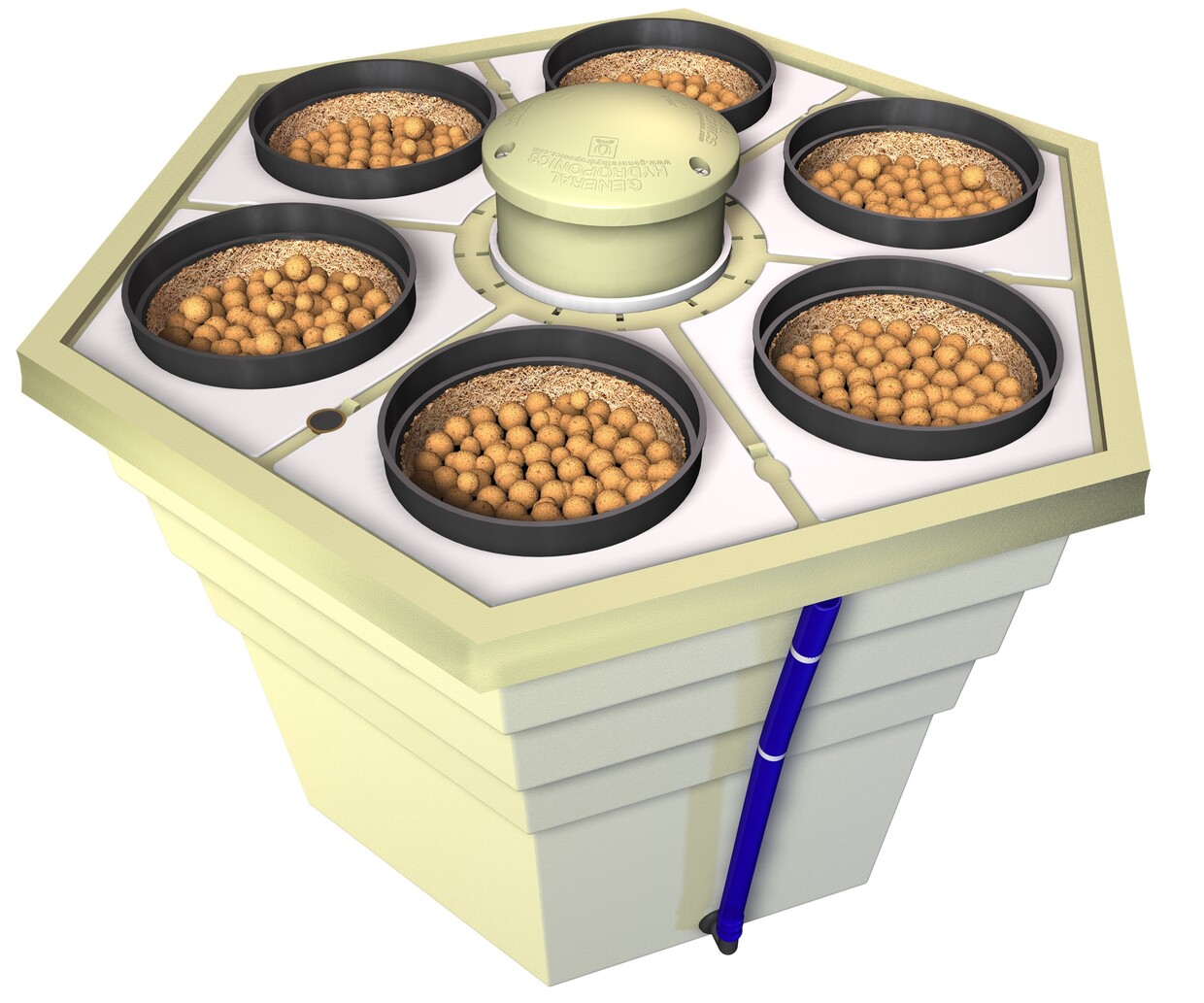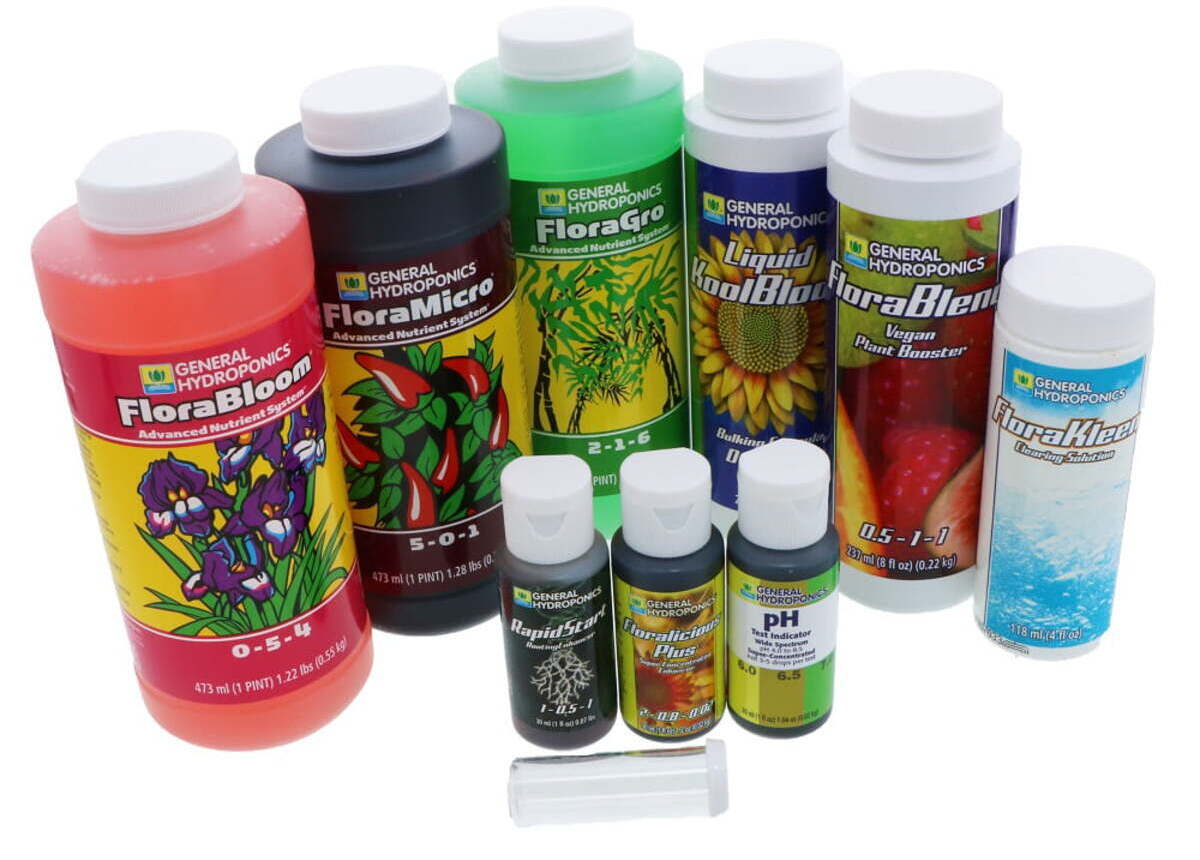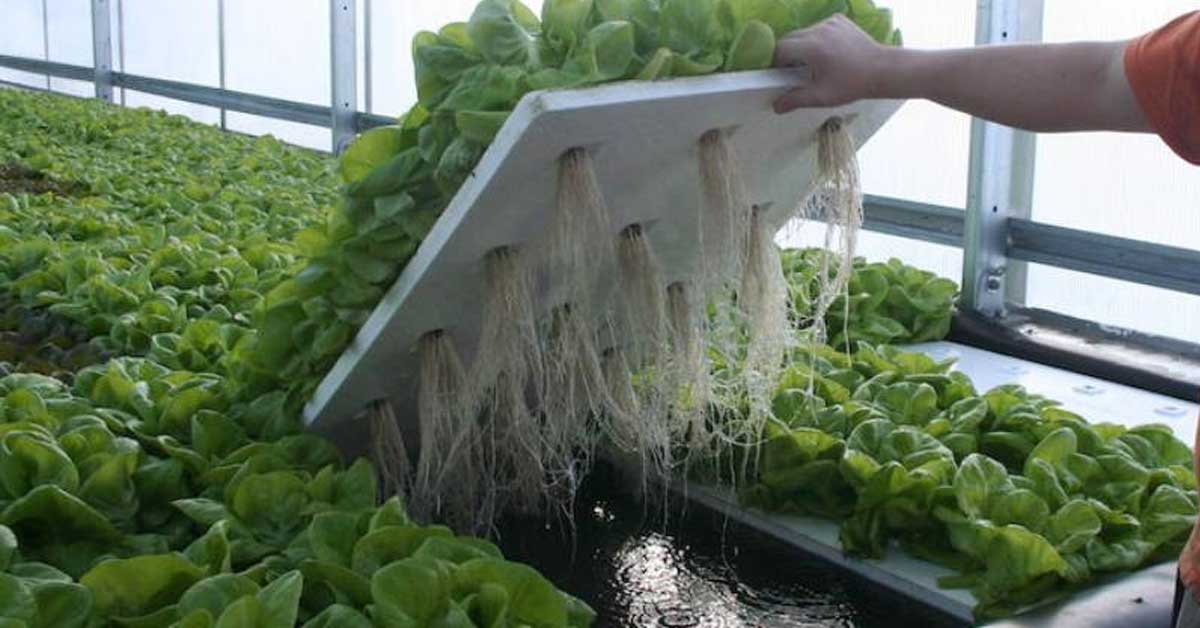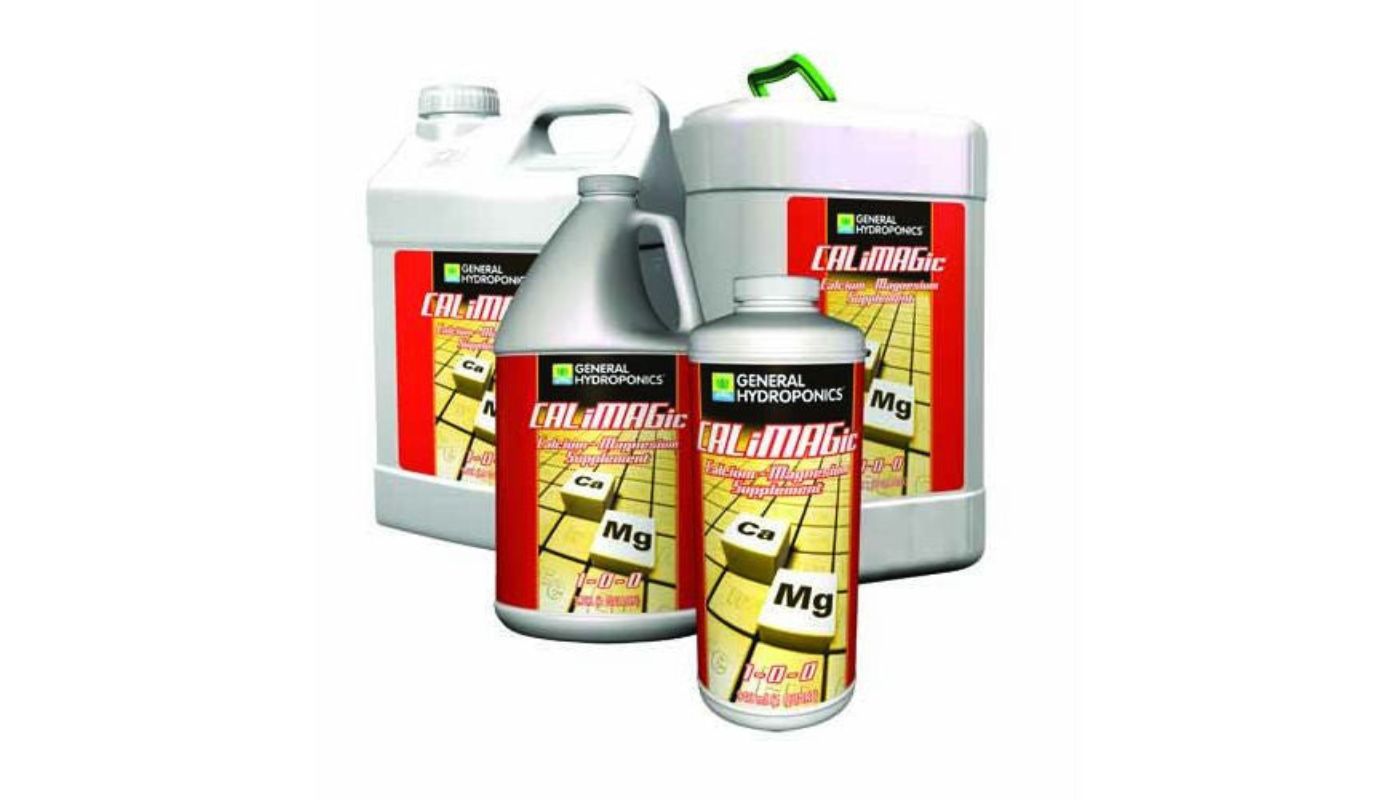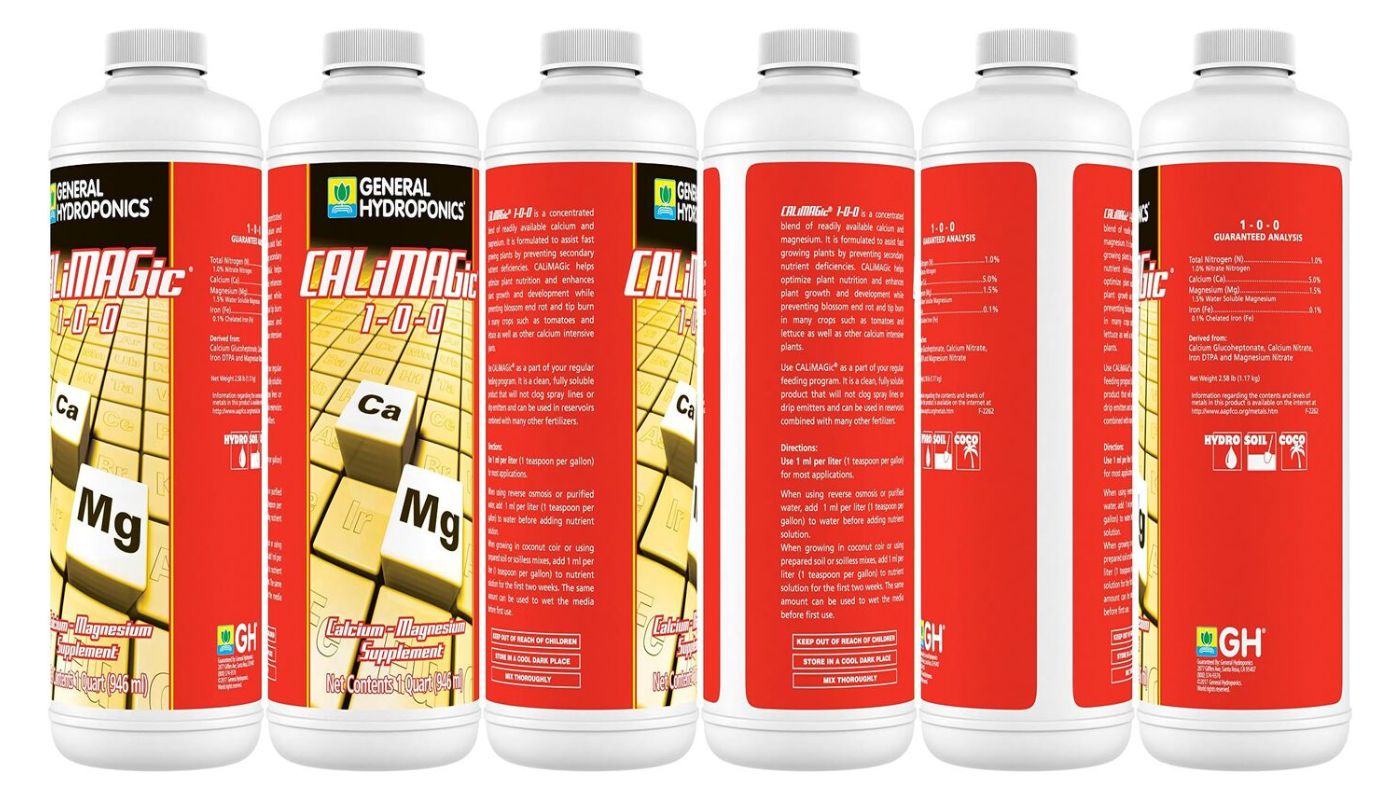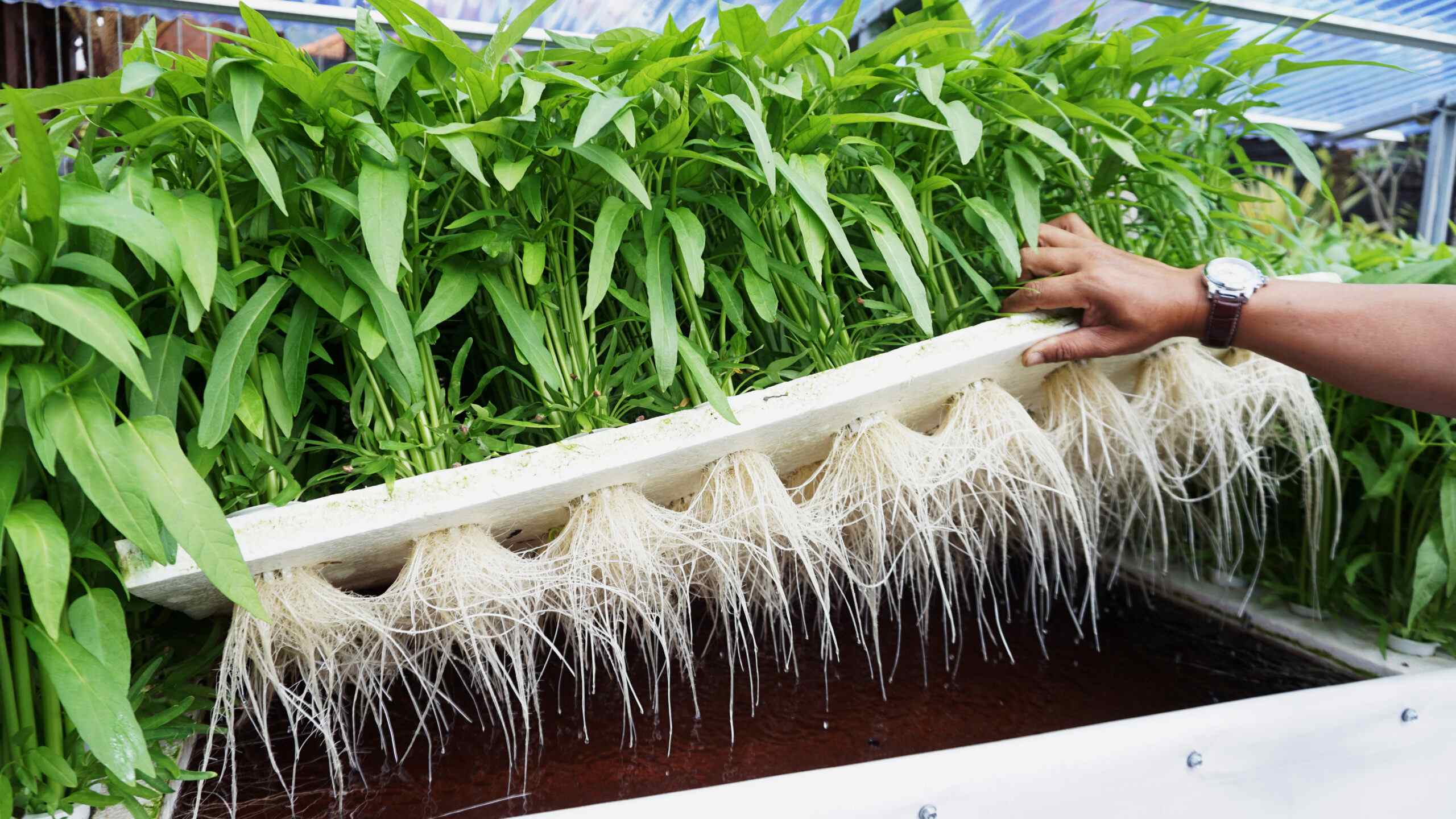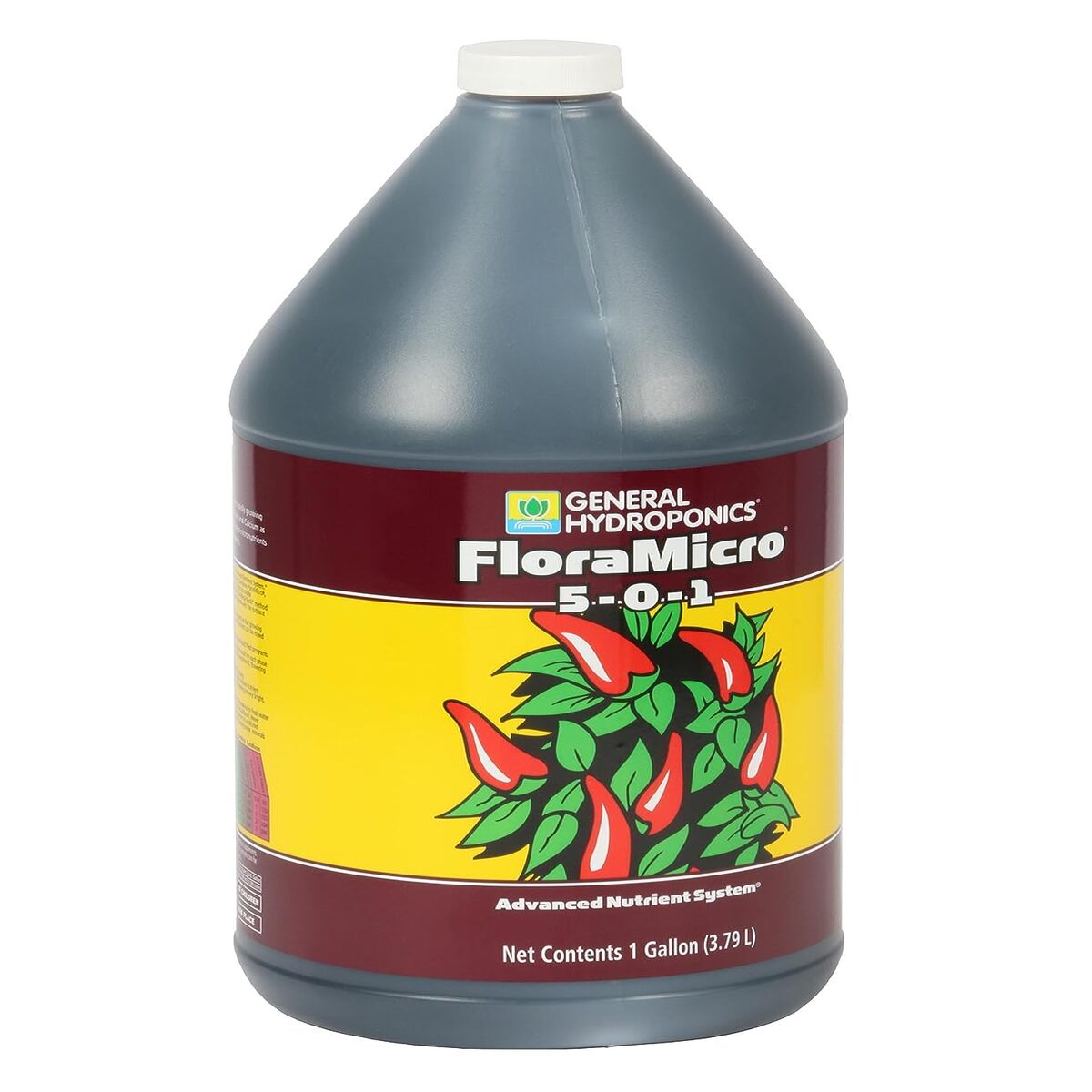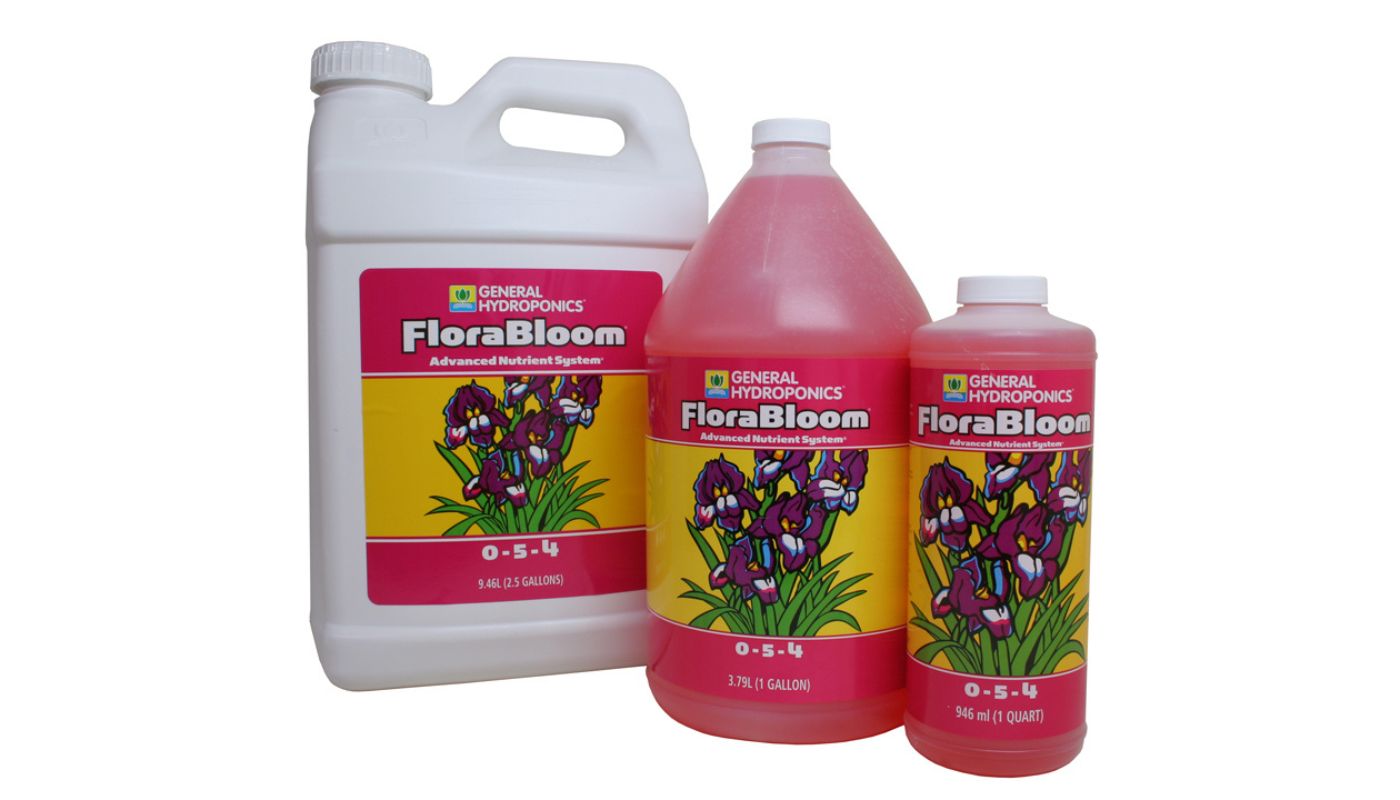Home>Gardening Tips and Tricks>Eco-Friendly Gardening>How To Use General Hydroponics


Eco-Friendly Gardening
How To Use General Hydroponics
Modified: February 10, 2024
Learn how to use General Hydroponics for eco-friendly gardening and achieve optimal results in your indoor garden. Discover innovative techniques and expert tips!
(Many of the links in this article redirect to a specific reviewed product. Your purchase of these products through affiliate links helps to generate commission for Chicagolandgardening.com, at no extra cost. Learn more)
Table of Contents
- Introduction
- What is General Hydroponics?
- Benefits of using General Hydroponics
- Setting up a General Hydroponics System
- Choosing the Right Nutrients for Your General Hydroponics System
- Adjusting pH Levels in General Hydroponics
- Maintaining and Troubleshooting Your General Hydroponics System
- Harvesting and Maximizing Yields with General Hydroponics
- Conclusion
Introduction
Welcome to the world of eco-friendly gardening! If you’re passionate about gardening and want to minimize your environmental impact, then eco-friendly gardening is the way to go. One of the key aspects of eco-friendly gardening is using sustainable and efficient gardening practices, and that’s where General Hydroponics comes in. In this article, we will explore what General Hydroponics is, its benefits, how to set up a system, choose the right nutrients, adjust pH levels, maintain the system, and maximize your yields.
General Hydroponics is a method of growing plants without soil, using a nutrient-rich water solution instead. It is a highly efficient and sustainable gardening technique that allows you to grow plants in a controlled environment, with precise control over nutrient levels, pH, and moisture. This ensures optimal growth and maximum yield, while minimizing water and fertilizer waste.
By using General Hydroponics, you can enjoy a range of benefits. Firstly, since there is no soil involved, there’s no risk of soil-borne pests and diseases, reducing the need for harmful pesticides. Secondly, since the plants receive all their nutrients directly from the water solution, they can grow faster and produce higher yields compared to traditional gardening methods. Additionally, General Hydroponics requires significantly less water compared to soil-based gardening, making it a more sustainable choice for water conservation. Finally, General Hydroponics allows you to grow plants year-round, regardless of the weather or soil conditions in your area.
Setting up a General Hydroponics system requires some initial investment, but with the right guidance, it can be a rewarding and cost-effective endeavor. In the next sections, we will dive into the details of how to set up a General Hydroponics system, choose the right nutrients, adjust pH levels, maintain the system, and ultimately maximize your yields. Let’s get started on your eco-friendly gardening journey with General Hydroponics!
What is General Hydroponics?
General Hydroponics is a method of growing plants without soil, utilizing a water-based nutrient solution instead. It is a highly efficient and controlled gardening technique that allows gardeners to maximize plant growth and yield while minimizing water and fertilizer waste. The concept of hydroponics has been around for centuries, but General Hydroponics has revolutionized the practice by creating a comprehensive system that is suitable for both beginner and experienced gardeners.
In a General Hydroponics system, plants are grown in a soilless medium, such as perlite, coconut coir, or rockwool. The plants’ roots are suspended in the nutrient solution, which is constantly circulated to provide them with the necessary nutrients and oxygen. By eliminating the use of soil, General Hydroponics eliminates the risk of soil-borne pests and diseases, making it a cleaner and more sustainable gardening option.
One of the key components of General Hydroponics is the nutrient solution. This solution contains all the essential elements and minerals that plants need for healthy growth and development. By providing the nutrients directly to the plant roots, General Hydroponics ensures efficient nutrient uptake, resulting in faster growth and higher yields compared to traditional gardening methods.
Another important aspect of General Hydroponics is the precise control it offers over environmental factors such as pH and moisture. In a General Hydroponics system, you have the ability to adjust the pH levels of the nutrient solution, ensuring that the plants can absorb the nutrients optimally. Additionally, since the plants receive water and nutrients directly to their roots, they can access these resources more efficiently, reducing water usage.
General Hydroponics can be used to grow a wide variety of plants, ranging from leafy greens and herbs to fruit-bearing crops. It is suitable for indoor gardening setups, such as grow tents and hydroponic systems, as well as outdoor hydroponic gardens. The versatility and scalability of General Hydroponics make it an excellent choice for home gardeners, commercial farmers, and anyone interested in sustainable gardening practices.
In the following sections, we will delve into the benefits of using General Hydroponics, how to set up a system, choose the right nutrients, adjust pH levels, maintain the system, and ultimately maximize your yields. Stay tuned for a comprehensive guide to help you embark on your eco-friendly gardening journey with General Hydroponics!
Benefits of using General Hydroponics
Using General Hydroponics offers numerous benefits for gardeners, whether you are a hobbyist or a commercial farmer. Here are some of the key advantages of utilizing this innovative gardening method:
- Higher Yields: General Hydroponics allows plants to grow faster and produce higher yields compared to traditional soil-based gardening. The controlled environment and direct access to nutrients enable plants to focus their energy on growth and development, resulting in more abundant harvests.
- Water Efficiency: General Hydroponics is incredibly water-efficient, using up to 90% less water than traditional gardening methods. The nutrient solution in the hydroponic system is recirculated, minimizing water waste and making it an eco-friendly choice for water conservation.
- No Soil-Borne Pests and Diseases: Since General Hydroponics eliminates the use of soil, there is a significantly reduced risk of soil-borne pests and diseases. This eliminates the need for harmful pesticides and allows for cleaner and healthier plant growth.
- Year-Round Gardening: General Hydroponics enables gardeners to grow plants year-round, regardless of seasonal or weather conditions. By creating a controlled environment indoors, you can extend your growing season and enjoy fresh produce throughout the year.
- Space Efficiency: General Hydroponics systems are space-efficient and can be set up in various indoor and outdoor locations. Whether you have limited garden space or live in an urban area, hydroponics allows you to maximize your growing potential without the need for expansive plots of land.
- Nutrient Control: With General Hydroponics, you have precise control over the nutrient levels and balance. This allows you to provide plants with the exact nutrients they need at each stage of growth, ensuring optimal health and productivity.
Additionally, General Hydroponics offers the flexibility to experiment with different plant varieties and grow uncommon or exotic plants that may not thrive in traditional gardening environments. It also requires less physical effort compared to traditional gardening methods, as there is no need for tilling, weeding, or bending down to tend to plants.
Overall, General Hydroponics is a game-changer in the world of gardening, providing efficient and sustainable solutions for growing fresh produce. In the next sections, we will dive into the specifics of setting up a General Hydroponics system, choosing the right nutrients, adjusting pH levels, maintaining the system, and maximizing your yields. Get ready to unlock the full potential of eco-friendly gardening with General Hydroponics!
Setting up a General Hydroponics System
Setting up a General Hydroponics system requires careful planning and consideration of various factors. Here are the key steps and considerations to help you get started:
- Choose the Type of System: There are several types of General Hydroponics systems to choose from, including Deep Water Culture (DWC), Nutrient Film Technique (NFT), and Ebb and Flow. Each system has its advantages and considerations, so research and determine which one suits your needs and available space.
- Select a Growing Medium: The growing medium provides support for the plants’ roots and holds moisture while allowing for proper drainage. Common options include perlite, coconut coir, and rockwool. Consider the characteristics and availability of each medium before making your choice.
- Set up the Reservoir: The reservoir holds the nutrient solution that provides the necessary elements for plant growth. Choose a container that is large enough to accommodate the needs of your plants and consider using an air pump to ensure proper aeration of the nutrient solution.
- Create a Pumping System: Depending on the type of General Hydroponics system you choose, you may need to set up a pumping system to circulate the nutrient solution. This can involve using a submersible pump and tubing to deliver the solution to your plants.
- Install Grow Trays or Pots: Determine the size and number of grow trays or pots needed for your system. Ensure they are sturdy, water-resistant, and provide sufficient space for the plants to grow. Position them in a way that allows easy access for maintenance and harvesting.
- Provide Lighting: General Hydroponics systems typically require artificial lighting to ensure the proper growth of plants. Choose appropriate grow lights, such as LED or fluorescent lights, and position them at an optimal distance from the plants to provide adequate light intensity.
- Monitor and Adjust Environmental Variables: Regularly monitor and adjust variables such as temperature, humidity, and airflow within your General Hydroponics system. These factors can significantly impact plant growth and success.
- Start with Hardy Plants: If you are new to General Hydroponics, it is recommended to start with hardy and easy-to-grow plants such as lettuce, herbs, or leafy greens. Gain experience and understanding before moving on to more demanding plant varieties.
It’s important to research and follow detailed instructions specific to the General Hydroponics system you choose. Consider factors such as the size of your desired setup, available space, budget, and the types of plants you wish to grow.
By following these steps and dedicating time to set up your General Hydroponics system properly, you will be well on your way to enjoying the benefits of efficient and sustainable gardening. In the next sections, we will explore how to choose the right nutrients, adjust pH levels, maintain your General Hydroponics system, and ultimately maximize your yields. Let’s continue our journey towards eco-friendly gardening success!
Choosing the Right Nutrients for Your General Hydroponics System
Choosing the right nutrients is crucial for the success of your General Hydroponics system. Unlike traditional soil-based gardening, where plants can extract nutrients from the soil, in hydroponics, you are responsible for providing all the essential elements necessary for plant growth. Here are some key considerations when selecting nutrients for your General Hydroponics system:
- Know the Essential Elements: Plants require a variety of essential elements for healthy growth, including macronutrients (nitrogen, phosphorus, and potassium) and micronutrients (iron, manganese, zinc, etc.). Ensure that the nutrient solution you choose contains all these essential elements in the right proportions.
- Consider the Growth Stage: Different plants have varying nutrient requirements throughout their growth stages. Ensure that the nutrients you choose have formulations suitable for both vegetative and flowering stages, or adjust the nutrient composition accordingly.
- Pay Attention to Nutrient Ratios: The ideal nutrient ratios may vary depending on the type of plants you are growing. It’s important to find a balance that meets the specific needs of your crops. Consult the manufacturer’s instructions or seek guidance from experienced hydroponic gardeners.
- Quality and Purity: Ensure that the nutrients you select are of high quality and free from impurities. Low-quality nutrients can lead to nutrient imbalances or the presence of harmful substances that could negatively affect plant health and overall yield.
- Consider pH Adjustment: Some nutrient solutions come pre-adjusted to a specific pH level. However, depending on your water source and your system’s conditions, you may need to make pH adjustments. Choose nutrients that can be easily adjusted to the desired pH range.
- Organic vs. Synthetic: Consider whether you prefer to use organic or synthetic nutrients. Organic nutrients are derived from natural sources and can be a more sustainable choice, but they may require additional attention and monitoring. Synthetic nutrients, on the other hand, are chemically formulated and offer precise control over nutrient composition.
- Research and Experiment: Every garden is unique, and nutrient requirements can vary depending on various factors such as plant variety, environmental conditions, and system setup. Take the time to research and experiment to find the optimal nutrient solution for your General Hydroponics system.
Remember to follow the manufacturer’s instructions regarding nutrient dosages and mixing ratios. It’s important to provide your plants with the right balance of nutrients to promote healthy growth and prevent deficiencies or toxicities.
Regularly monitor your plants for any signs of nutrient deficiencies or excesses. This includes observing leaf discoloration, stunted growth, and distorted leaves. Adjust the nutrient solution accordingly to maintain optimal plant health.
By selecting the right nutrients and ensuring proper nutrient management, you are setting the foundation for successful plant growth in your General Hydroponics system. In the next sections, we will explore how to adjust pH levels, maintain your system, and maximize your yields. Stay tuned for more valuable insights to help you become an eco-friendly gardening expert!
Adjusting pH Levels in General Hydroponics
One crucial aspect of maintaining a healthy General Hydroponics system is adjusting and maintaining the pH levels of the nutrient solution. pH is a measure of acidity or alkalinity, and it affects nutrient availability and uptake by plant roots. Here are some key considerations and steps to follow when adjusting pH levels in your General Hydroponics system:
- Understanding pH Range: The pH scale ranges from 0 to 14, with 7 being neutral. For most hydroponic systems, a pH range of 5.5 to 6.5 is optimal. This range ensures that essential nutrients are available to plants and can be efficiently absorbed.
- Use a Reliable pH Tester: Invest in a quality pH tester or pH meter to accurately measure the pH of your nutrient solution. pH test strips can also be used, but they may not be as accurate as a digital meter.
- Testing and Adjusting pH: Test the pH of your nutrient solution regularly, ideally every day. If the pH is too high (above the desired range), it means the solution is alkaline, and if it is too low (below the desired range), it means the solution is acidic. Adjust the pH accordingly using pH up (alkaline) or pH down (acidic) solutions.
- Gradual Adjustments: When adjusting pH, make gradual changes rather than drastic ones. Small increments or decrements of pH levels allow plants to acclimate to the changes without stress.
- Check Water Source pH: The pH of your water source can affect the pH of your nutrient solution. Test the pH of your water before mixing in nutrients and adjust it if necessary. This way, you start with a more stable pH before adding nutrients.
- Monitor and Maintain pH: Measure and adjust the pH regularly, as fluctuations can occur due to plant nutrient uptake or pH drift caused by the breakdown of organic matter. Aim to keep the pH within the desired range to ensure optimal nutrient availability.
- Consider Nutrient Interactions: pH can affect nutrient availability and uptake by plants. Some nutrients are more available at specific pH ranges, while others may become less available. Understanding these interactions can help you fine-tune your nutrient solution and optimize plant health.
- Keep Records: Maintain a journal or record of your pH measurements and adjustments. This can help you identify patterns, track changes, and make informed decisions about adjustments and future nutrient solutions.
Remember, pH adjustments are an ongoing process in hydroponics, as the nutrient solution can drift over time. Regularly monitoring and adjusting the pH will help ensure that your plants have access to the necessary nutrients for healthy growth and development.
By carefully managing and adjusting the pH levels in your General Hydroponics system, you can promote optimal nutrient uptake and create an environment where your plants can thrive. In the following sections, we will delve deeper into maintaining and troubleshooting your General Hydroponics system, as well as maximizing your yields. Stay with us on this eco-friendly gardening journey!
Maintaining and Troubleshooting Your General Hydroponics System
Maintaining your General Hydroponics system is essential to ensure optimal plant growth and maximize your yields. Regular maintenance and troubleshooting help prevent potential issues and keep your system running smoothly. Here are some key tips to help you maintain and troubleshoot your General Hydroponics system:
- Inspect and Clean Regularly: Regularly inspect your system for any signs of algae growth, clogs, or debris. Clean your grow trays, reservoir, and irrigation components to prevent clogging and the build-up of harmful bacteria.
- Monitor Nutrient Levels: Regularly check your nutrient solution’s strength using an electrical conductivity (EC) meter or a total dissolved solids (TDS) meter. Maintain the appropriate nutrient strength for your plants’ growth stage by adjusting the nutrient solution as needed.
- Check Water Levels: Ensure a consistent water level in your system’s reservoir. Avoid overfilling, as it can lead to insufficient oxygen levels, root rot, or nutrient imbalances. Maintain the appropriate water level to provide enough moisture for the plants’ roots.
- Maintain Temperature and Humidity: Monitor and maintain an optimal temperature and humidity level in your growing area. Proper ventilation, cooling systems, and dehumidifiers can help regulate these factors and create a favorable environment for healthy plant growth.
- Oxygenate the Nutrient Solution: Oxygen is crucial for healthy root growth. Ensure that your nutrient solution is properly oxygenated by using air stones, air pumps, or bubblers. This promotes efficient nutrient uptake and prevents root diseases caused by stagnant water.
- Check for Pests and Diseases: Regularly inspect your plants for any signs of pests or diseases. Early detection and intervention can help prevent the spread of issues to other plants in your system. Remove affected plants, clean the system, and take appropriate measures to mitigate pest and disease risks.
- Monitor pH and Adjust as Needed: Continuously monitor the pH levels of your nutrient solution and adjust it as necessary. pH fluctuations can impact nutrient availability and plant health. Always maintain the appropriate pH range to ensure optimal nutrient uptake.
- Keep a Schedule: Create a maintenance schedule to ensure you perform regular tasks such as cleaning, checking nutrient levels, adjusting pH, and monitoring plant health. Consistency is key to maintaining a healthy General Hydroponics system.
- Stay Informed: Continuously educate yourself about hydroponics and stay updated on the latest techniques, solutions, and troubleshooting tips. Participate in online forums, join gardening communities, and read reputable sources to expand your knowledge and connect with experienced hydroponic growers.
In case you encounter any issues or challenges in your General Hydroponics system, don’t get discouraged. Troubleshooting is a part of the learning process. Consult troubleshooting guides, seek advice from experienced hydroponic gardeners, or contact the manufacturer for support to help identify and resolve any problems.
By regularly maintaining your General Hydroponics system and promptly addressing any issues that arise, you will create an optimal growing environment, ensuring healthy plant growth and maximizing your yields. In the following sections, we will explore how to harvest your hydroponic crops and learn techniques for maximizing your yields. Let’s continue on this eco-friendly gardening journey!
Harvesting and Maximizing Yields with General Hydroponics
When it comes to harvesting and maximizing yields in your General Hydroponics system, timing, technique, and attention to detail are key. Here are some tips to help you optimize your harvests and achieve maximum yields:
- Monitor Plant Growth Stage: Regularly monitor the growth stage of your plants. Different crops have specific signs that indicate they are ready for harvest, such as flower development or fruit ripening. Harvesting at the right time ensures the best flavor, texture, and quality.
- Use Proper Harvesting Techniques: Use clean, sharp tools to harvest your crops to minimize damage and prevent the spread of diseases. Cut or trim stems above a node or leave a stub to encourage regrowth, depending on the plant variety.
- Harvest Continuously: In a General Hydroponics system, plants can have varying growth rates. Harvest mature plants as soon as they are ready, making room for younger plants to continue growing and ensuring a continuous harvest throughout the season.
- Prune and Trim: Regularly prune and trim your plants to remove dead leaves, branches, or excessive growth. This helps redirect energy for productive growth while improving air circulation and reducing the risk of pests and diseases.
- Maximize Space Utilization: General Hydroponics systems allow for precise control of plant spacing. Utilize vertical gardening techniques, trellises, or trained growth patterns to maximize space and increase overall plant yield.
- Consider Crop Rotation: Rotate crops within your General Hydroponics system to maintain healthy soilless media and reduce the risk of nutrient imbalances and pests. This practice also helps prevent the buildup of disease-causing organisms specific to certain plant families.
- Experiment with Nutrient Solutions: Adjust the nutrient composition and strength of your solution to match specific plant requirements or growth stages. Experimenting with different nutrient formulations can help optimize growth and maximize yields.
- Optimize Lighting: Ensure that your plants receive adequate and appropriate lighting throughout their growth cycles. Adjust the distance, intensity, and duration of light exposure based on the specific light requirements of your crops.
- Maintain Ideal Environmental Conditions: Maintain proper temperature, humidity, and airflow in your General Hydroponics system. Optimal environmental conditions promote healthy plant development and yield maximization.
- Keep Records and Learn: Maintain a record of your planting and harvesting dates, nutrient formulations, and environmental conditions. Analyze and learn from these records to refine your system and improve future yields.
Remember, maximizing yields is an ongoing process that requires careful observation, adjustment, and experimenting. Each crop, system setup, and growing environment may have unique factors that impact yield potential. By continuously learning, adapting, and exploring new techniques, you can continuously improve your yields over time.
Enjoy the fruits of your labor by harvesting and savoring the fresh, flavorful produce from your General Hydroponics system. In the next sections, we will wrap up our guide by summarizing our key points and leaving you with final thoughts. Let’s conclude this eco-friendly gardening journey together!
Conclusion
Congratulations on completing our comprehensive guide to eco-friendly gardening with General Hydroponics! We have explored the world of General Hydroponics, understanding its benefits, setting up a system, choosing the right nutrients, adjusting pH levels, maintaining the system, and maximizing your yields.
General Hydroponics offers a sustainable and efficient approach to gardening, allowing you to grow plants without soil, conserve water, and maximize yield potential. By utilizing this innovative technique, you can enjoy higher yields, conserve water, eliminate soil-borne pests and diseases, and grow plants year-round.
Throughout our guide, we have highlighted the importance of careful planning, attention to detail, regular maintenance, and continuous learning. By following these principles, you can create an optimal growing environment, ensure proper nutrient uptake, prevent issues, and achieve maximum yields in your General Hydroponics system.
Remember to stay informed, continue to learn and experiment, and connect with other hydroponic gardeners to expand your knowledge and stay up to date with the latest techniques and advancements in the field.
Whether you are a passionate hobbyist or a commercial farmer, General Hydroponics opens up a world of possibilities for sustainable and productive gardening. Enjoy the satisfaction of growing your own fresh produce, savoring the flavors and aromas, and contributing to a greener and more eco-friendly world.
Now that you have the knowledge and tools, it’s time to embark on your own eco-friendly gardening journey with General Hydroponics. Start small, learn from experience, and gradually expand your system as you gain confidence and expertise.
Happy gardening and may your General Hydroponics system bring you bountiful harvests for years to come!
